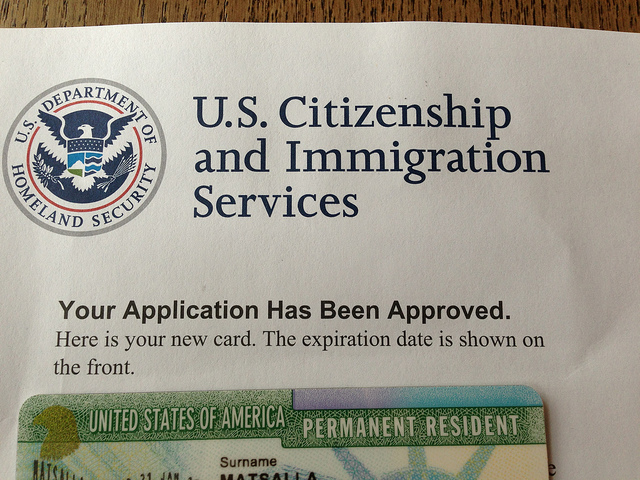On May 19, 2017, the American Immigration Lawyers Association (AILA) spoke with Charles Oppenheim, the Chief of the Visa Control and Reporting Division for the U.S. Department of State, to discuss current trends and future projections for various employment and family preference categories.
Family preference and employment immigrant categories are subject to numerical limitations and are divided by preference systems and priority dates on the Visa Bulletin. Family-sponsored preference categories are limited to a minimum of 226,000 visas per year, while employment-based preference categories are limited to a minimum of 140,000 visas per year. The Visa Bulletin is a useful tool for aliens to determine when a visa will become available to them so that they may apply for permanent residence. Applicants who fall under family preference or employment categories must wait in line until a visa becomes available to them in order to proceed with their immigrant visa applications. Once the immigrant’s priority date becomes current, per the Visa Bulletin, the applicant can proceed with their immigrant visa application.
You can check the status of a visa number by checking your priority date on the Department of State’s Visa Bulletin published every month. In other words, the Visa Bulletin estimates immigrant visa availability for prospective immigrants and is revised every month.
Trends & Projections
Employment-based Preference Categories:
Current trend: There is an increase in demand across employment-based preference categories, including EB-4 and EB-5, which has decreased unused numbers that would have otherwise become available for use by EB-1 and EB-2 applicants. This means that many people will be prevented from using what would have been available numbers, due to the increase in demand in other employment categories (EB-4, EB-5). Because of increased demand for the EB-1 Worldwide category, EB-1 India and EB-1 China will have a final action cut-off date. EB-2 China and EB-2 India numbers will be restricted to their annual limits. This trend is likely to continue in the near future.
In FY 2017, EB-2 India number usage will be subject to its annual limit of 2,803, as opposed to previous years when there were unused numbers that trickled down to EB-2 India from other employment categories. Increasing demand in other employment based preference categories will create pressure on EB-1 and EB-2 for China and India.
EB-1 China and EB-1 India: A final action date of January 1, 2012 will be imposed on these categories. Currently, EB-1 China and EB-1 India has already used nearly half of the EB-1 Worldwide limit allowed for this fiscal year. The final action date will remain imposed until the remainder of the fiscal year.
Projection: Charlie projects that the final action date for these categories may become current on October 1st, following previous trends. EB-1 Worldwide is expected to remain current through the remainder of this fiscal year and the next fiscal year.
EB-2 Worldwide: Due to increased demand in the EB-2 preference category, a final action cut-off date will be imposed by the month of August, and as soon as July. The date will be determined based on remaining numbers and monthly demand. Depending on how high the demand is, the date may remain the same through the end of the fiscal year, or advance slightly in September. Retrogression is expected to be brief and become current on October 1st.
EB-2 India: Due to upgrades in the EB-2 category, demand for EB-2 India remains high. Availability of visas in this category is restricted to the country limit. EB-2 India is expected to advance slightly in the month of June, but the final action date is not expected to return to last year’s final action date. The existing final action date is expected to remain through the remainder of the fiscal year.
EB-2 China and EB-3 China: EB-2 China will advance to March 1, 2013 in the month of June. EB-3 China’s final action date of October 1, 2014 is expected to hold steady in June.
Projection: EB-2 China is expected to advance slowly, and is on track to reach the per country limit. It is possible that EB-3 China may retrogress.
EB-3 Worldwide: EB-3 Worldwide is expected to advance to April 15, 2017 in June, becoming current. It is likely that this category will continue to advance.
EB-3 India: EB-3 India will advance from March 25, 2005 to May 15, 2005 in the month of June. Low demand in the EB-3 Worldwide and Mexico categories will allow the EB-3 category to continue to advance in July and August given that the category will receive “unused” numbers from EB-3 Worldwide and Mexico.
Projection: The July final action date for EB-3 India will advance to October 15, 2005.
EB-5 China: This category will advance slightly to June 8, 2014 in the month of June.
Projection: There will be slow movement in this category.
FB-4: Applicants should watch this category closely. The final action date is expected to remain the same in June, but this category may advance later in the fiscal year.
FB-4 Worldwide: This category will continue to advance given that many applicants have not responded to the NVC’s “Agent of Choice” letters. It is estimated that only about 40% of FB-4 beneficiaries have responded to these letters by the deadline, and only 15% of those who responded provided satisfactory information for scheduling of an interview. Applicants must be careful to respond in a timely manner, in order to be scheduled for an interview without delay.
Special Immigrants. EB-4 India: A final action date will be imposed in the month of July for El Salvador, Guatemala, Honduras, and Mexico. That final action date is expected to be August 15, 2015.
The SQ category for certain Afghanis is expected to remain current, following approval of 2,500 additional visas.
For more information please visit our website.
 Visa Lawyer Blog
Visa Lawyer Blog




